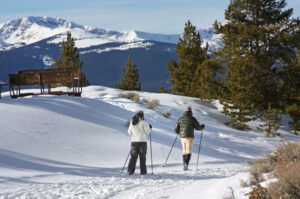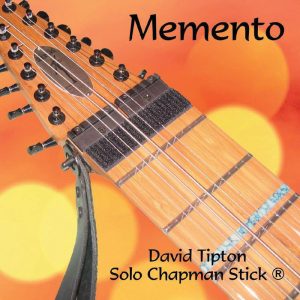By Hal Walter
One snowy morning this fall, at the school-bus stop, another parent commented on the weather, asking, “You think this means we’re going to get some actual snow this winter?”
I thought about this briefly and then recalled that the previous fall it had snowed a couple times early, then basically stopped for the entire season. I replied that based on last year’s record, wading through drifts at Halloween brings no confidence for a snowy winter.
“Really? I don’t remember that,” she said.
“Yeah, that’s how it went,” I reassured her.
Nevertheless, I set about daydreaming of cross-country skiing this winter. This included fantasies of setting tracks at The Bluff Park in town for after-school skiing, and keeping a trail groomed up on the nearby forest access. Maybe, just maybe, I’d get enough ski time to enter the Leadville Loppet cross-country race. I’ve been wanting to ski in the “classic” (diagonal stride) division for three years, but have missed each time.
As Thanksgiving approached, the early snow cover here began to sublimate. Nevertheless, I ordered new boots and poles for my son Harrison.
One afternoon I loaded up the equipment and we drove over to Lake Isabel, where I heard there was decent snow, about 45 miles away in the Wet Mountains. What I found was maybe a foot of snow, and some faint tracks on the north side of the lake. These weren’t great conditions but served just fine to get the ski legs back beneath us, and also to fuel enthusiasm. I was astounded at the improvement in Harrison’s abilities after not skiing much these past two seasons. The engrams in the autistic brain are fascinating, adapting neurological memory along with developing muscles and balance.
After this I began to think about new equipment for myself. Perhaps I should get new skis. I’d been out of the market for so long I was intrigued by the new waxless “skin skis” which have built-in climbing skins and apparently are fast enough for racing.
Instead, I banked on it snowing again sometime soon and boldly ordered a device I could pull with a harness to groom my own trails. It arrived along with fall-like weather that long-term forecasts show may linger with little chance of snow, portending yet another “open winter.” Perhaps I can get the groomer out later in the season or in the spring when and if it snows. The world is changing and we must adapt and evolve. It pays to have an alternative reality ready to go. Just ask the “president.”
Coincidentally, along with the warmer weather arrived a renewed focus on training wild burros, partly fueled by the fact that I can apparently make ten times more money at this than I can by writing.
It struck me that we often use the word “broke” in discussing the training of equines, whether they be horses, mules or burros. It’s interesting because being “broke” is viewed as a good thing for an equine, but for humans it means being completely out of money. It can also refer to having your spirit destroyed.
Equines can be “halter-broke,” “unbroke,” “saddle-broke.” They can be “green-broke” or “dead-broke” or even “broke to hell.”
They can be “broke” to a cart or “broke” to a sleigh, though the latter would require snow and even more equipment that sets idle when the ground is bare.
Though I’ve never liked this word “broke,” because it evokes a sense of domination and destroying an animal’s spirit, it is ironically entrenched in the Western vernacular. Consider the following quote, which I actually love, from Cormac McCarthy’s “All the Pretty Horses”:
“My feelin’ is that any horse broke in four days is liable to come unbroke in four more.” – Lacey Rawlins
With a booming interest in pack-burro racing, there’s been a corresponding renewed interest in wild burros. These animals have been captured on the desert ranges, and are offered for sale or adoption through the Bureau of Land Management’s various programs. Some of these animals are completely wild, and some have gone through a basic training program. Two such burros, Wild Blue and Roger, arrived here at my ranch recently. An open winter makes it easier to work consistently with them.
Though I have trained many wild burros over the years this newest generation is perplexing. They seem to be much wilder than their predecessors.
I have my theories, most of them centered on accelerated evolution. Burros, which have existed in the West since the 1500s when the Spanish brought them here, have been rounded up and adopted since the 1970s when the Wild Horse and Burro Protection Act made it illegal to kill them. The BLM began capturing burros, along with wild horses, and adopting them out, a practice that continues to this day. In fact, many burros in pack-burro racing, including some champions over the decades, have been from the wild.
My dealings in recent years have led me to believe these contemporary wild burros have become more vigilant, more explosive in behavior (more horse-like), quicker and more agile. Curiously, they also seem to be more aware of fence lines – always looking for an opening to make a break for freedom. I believe this is an adaptation from having been herded into traps.
My guess is that as a result of relentless roundup operations over several generations, natural selection has made these burros even more corybantic. Think about it. When roundup operations started, the first to get captured were those less wild. As time went on, those outlaws with more spirit found ways to elude the authorities, to escape. As a result, these animals were the ones left to pass on their genes, and form new social arrangements that favor independence and individuality. Two or three generations later, we now are dealing with a new breed of wild burro. Combined with the trauma of actually being captured, transported to holding facilities and, for males, being gelded, this adjustment to captivity is steeped in fear. The term “whirling dervish” comes to mind, though it’s important to note the original meaning was used to describe a dance performed to achieve the wisdom and love of God.
I’ve been working with Wild Blue and Roger this open winter, and pondering this word “broke” and how to help these animals adjust to their new environment without breaking their spirit. You can take the burro out of the wild, but taking the wild out of the burro is another story altogether. There are indeed some parallels with navigating the figurative blizzard that is this life. We can always ski when it snows.


